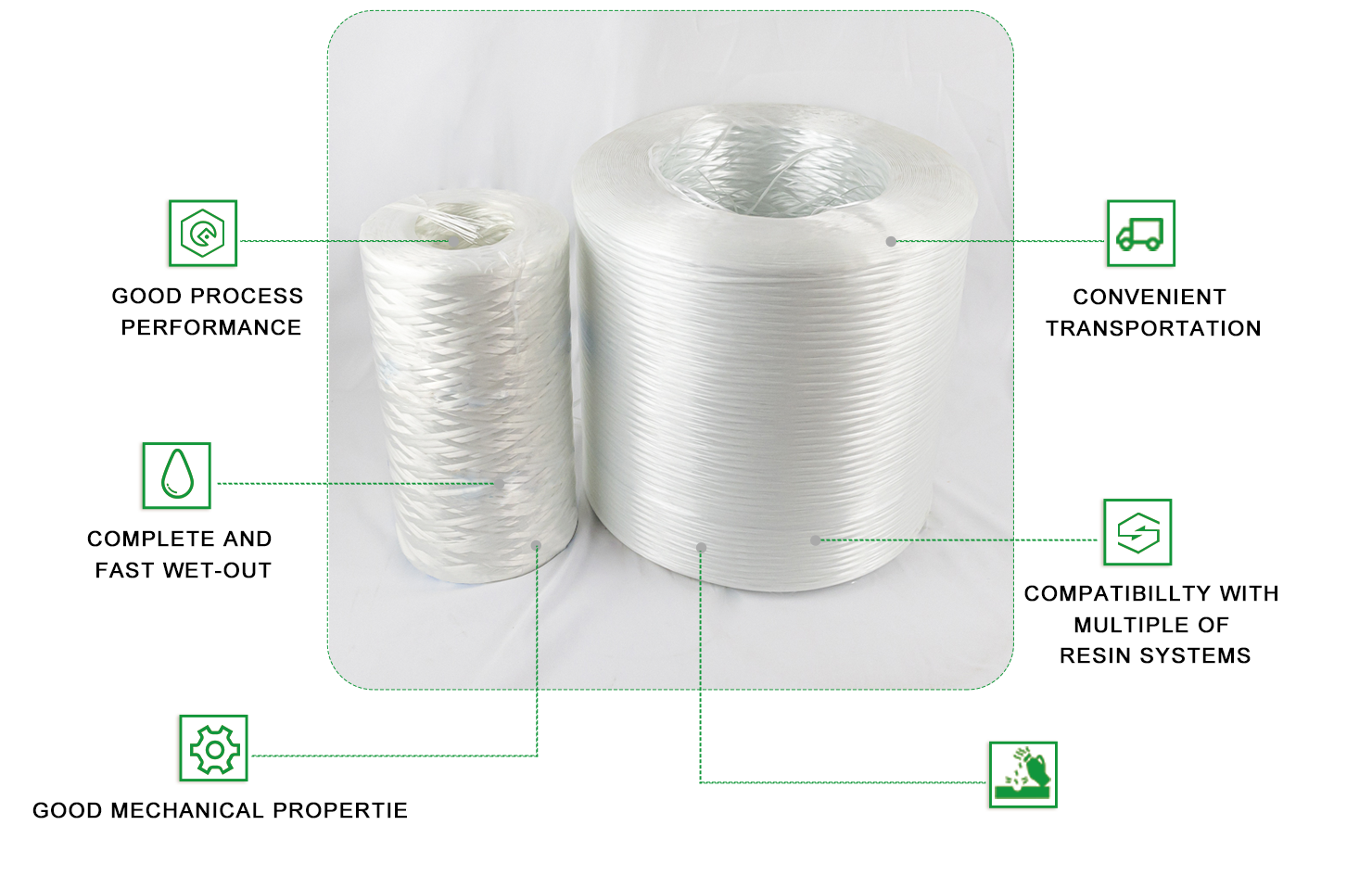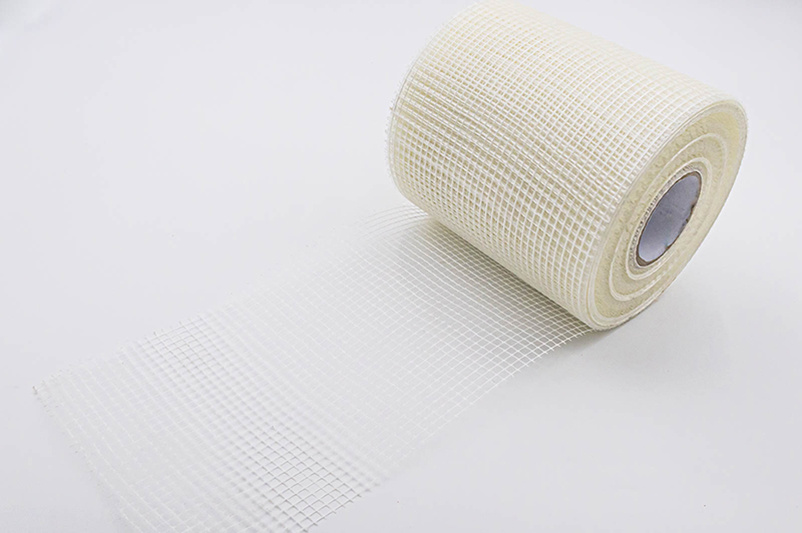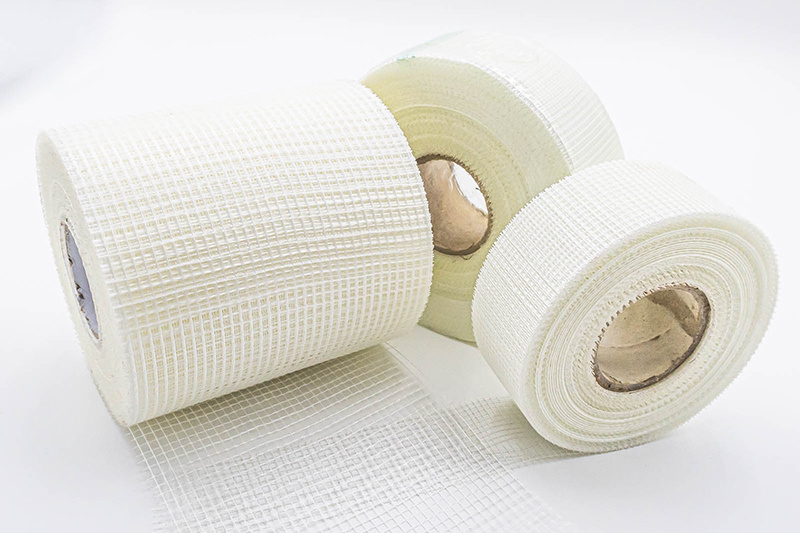Welcome To Hebei Xiongan Hengyun Technology Co., Ltd.
 Esperanto
Esperanto
 Shqiptare
Shqiptare
 Euskara
Euskara
 Zulu
Zulu
 Latinus
Latinus
 Cymraeg
Cymraeg
 தமிழ்
தமிழ்
 Slovak
Slovak
 Slovak
Slovak
 Afrikaans
Afrikaans
Fiberglass Roving: The Continuous Backbone of Composite Strength
2025-07-09
Fiberglass Roving: The Continuous Backbone of Composite Strength
Fiberglass roving stands as a fundamental and highly versatile reinforcement material within the vast world of composite materials. It forms the essential "skeleton" providing unparalleled tensile strength and structural integrity to countless products we encounter daily, from boats and bathtubs to wind turbine blades and automotive components. Unlike its cousin, chopped strand mat (CSM), which uses short, randomly oriented fibers, roving is defined by its continuous nature. This characteristic unlocks unique properties and manufacturing advantages.
I. What Exactly is Fiberglass Roving?
At its core, fiberglass roving is a collection of continuous glass filaments, gathered together into a single, untwisted strand or bundle, wound onto a large cylindrical package (a "doff" or "cheese"). Imagine thousands of incredibly fine glass hairs, thinner than a human hair, all running perfectly parallel and endlessly long, bundled without twisting.
-
Composition: Primarily made from E-glass (electrical grade), known for its good strength, electrical insulation, cost-effectiveness, and chemical resistance. Other glass types like S-glass (higher strength/stiffness), C-glass (chemical resistance), or AR-glass (alkali resistant for concrete) are used for specialized applications.
-
Manufacturing: Molten glass is drawn through platinum bushings containing hundreds or thousands of tiny holes, forming individual filaments. These filaments are immediately coated with a sizing – a critical chemical treatment applied during formation.
-
Formats: Roving is supplied primarily in two formats:
-
Direct Roving: The continuous strand is wound directly onto the package after formation and sizing. This is the most common form used in processes like pultrusion, filament winding, and weaving.
-
Plied Roving: Multiple direct rovings are combined (plied) together into a heavier, thicker strand, often used for spray-up applications or to build thicker laminates quickly.
-
II. Key Properties and Advantages of Roving:
-
Exceptional Tensile Strength: Continuous fibers provide the maximum possible tensile strength and stiffness along their length, far exceeding chopped fibers or many metals pound-for-pound. This makes roving ideal for primary structural elements.
-
High Efficiency in Load-Bearing Applications: Loads applied along the fiber direction are efficiently transferred through the entire continuous length, minimizing stress concentrations at fiber ends (which occur with chopped fibers).
-
Controlled Fiber Orientation: Roving allows precise placement and alignment of fibers in the direction of the primary loads within a composite part. This enables engineers to design highly optimized, lightweight structures.
-
High Reinforcement Content: Processes using roving can achieve very high fiber volume fractions (often 50-70%), maximizing the strength-to-weight ratio of the composite.
-
Process Versatility: Roving is compatible with a wide array of high-volume composite manufacturing techniques, enabling efficient production.
-
Dimensional Stability: Composites reinforced with continuous roving exhibit excellent resistance to creep and minimal thermal expansion along the fiber direction.
-
Cost-Effectiveness (for Performance): While raw material cost might be higher than some alternatives per pound, the superior mechanical properties and efficiency in design often lead to lighter, stronger, and ultimately more cost-effective final parts.
III. Primary Manufacturing Processes Utilizing Roving:
-
Pultrusion: The quintessential roving process. Continuous rovings (often combined with mats or fabrics) are saturated with resin, pulled through a heated die where they cure into a constant cross-section profile (e.g., beams, rods, channels, gratings). Roving provides the primary longitudinal strength. Keyword: Pultrusion.
-
Filament Winding: Continuous roving is fed through a resin bath and then precisely wound onto a rotating mandrel in predetermined patterns (helical, circumferential, polar). This creates high-strength, hollow structures like pressure vessels, pipes, rocket motor casings, and storage tanks. Roving is the backbone of this process. Keyword: Filament Winding.
-
Weaving/Knitting: Direct roving is the primary yarn used to weave heavy-duty fabrics like unidirectional (UD) fabrics, multiaxial fabrics (0°, +45°, -45°, 90° layers stitched together), and woven rovings (balanced or unbalanced weaves). These fabrics are then used as preforms in processes like resin infusion, RTM, or hand lay-up for complex parts requiring multidirectional strength. Keyword: Woven Roving.
-
Spray-Up: Chopped roving (roving fed through a chopper gun) combined with simultaneously sprayed resin is used to build up laminate layers quickly, especially for large, less structurally demanding parts like tub/shower units or simple boat hulls. Plied roving is common here.
-
Prepregs: Roving can be pre-impregnated with resin (usually epoxy) under controlled conditions to create unidirectional prepreg tapes or fabrics, used in high-performance aerospace and automotive applications.
-
Long Fiber Thermoplastics (LFT): Chopped roving segments (typically 1-25mm long) are incorporated into thermoplastic pellets or directly compounded. When molded, these longer fibers provide significantly better impact strength and stiffness compared to short glass fibers in standard thermoplastics. Keyword: Long Fiber Thermoplastics (LFT).
-
Compression Molding: Roving-based fabrics (woven, stitched) or SMC (Sheet Molding Compound – which often contains chopped roving) are placed in a mold, resin is added or pre-impregnated, and heat/pressure is applied to form the part.
IV. Applications Spanning Industries:
-
Transportation: Car leaf springs, drive shafts, bumper beams, truck panels (pultrusion); pressure vessels for CNG/LNG (filament winding); interior panels (LFT).
-
Construction & Infrastructure: Pultruded beams, gratings, rebar, bridge decks, window profiles; pipe (filament wound); roofing membranes (woven fabric).
-
Marine: Boat hulls, decks, masts, stringers (filament winding, infusion with woven/UD fabrics); kayaks/canoes.
-
Wind Energy: Massive turbine blades (primary load-bearing spars made via infusion or prepreg using vast amounts of UD roving fabrics).
-
Aerospace: Radomes, interior components, ducts (prepregs, filament winding).
-
Industrial: Chemical storage tanks, scrubbers, piping (filament winding); fume hoods, ladders, platforms (pultrusion); electrical insulators.
-
Consumer Goods: Surfboards, hockey sticks, fishing rods, tool handles, ladders, bathtubs/shower enclosures (spray-up, compression molding).
V. Specifications and Selection:
-
Tex (g/km): The most common unit, defining the mass in grams per 1000 meters of roving (e.g., 1200 tex, 4800 tex). Higher tex means heavier/thicker roving.
-
Yield (m/kg or yd/lb): The length per unit weight. Higher yield = finer/lighter roving.
-
Filament Diameter: Typically ranges from 13 to 24 microns.
-
Number of Filaments: Can range from hundreds to several thousand per strand.
-
Sizing Type: Crucial and must be matched to the resin system (polyester, epoxy, vinyl ester, PP, PA, etc.) and the manufacturing process.
-
Package Size/Weight: Standard doff sizes vary for different processes.
Related news
Fiberglass Self-Adhesive Tape: A Multifunctional Marvel for Sealing and Reinforcement
2025-07-08
Fiberglass Corner Mesh: The Unsung Hero of Flawless, Durable Walls and Corners
2025-07-07








